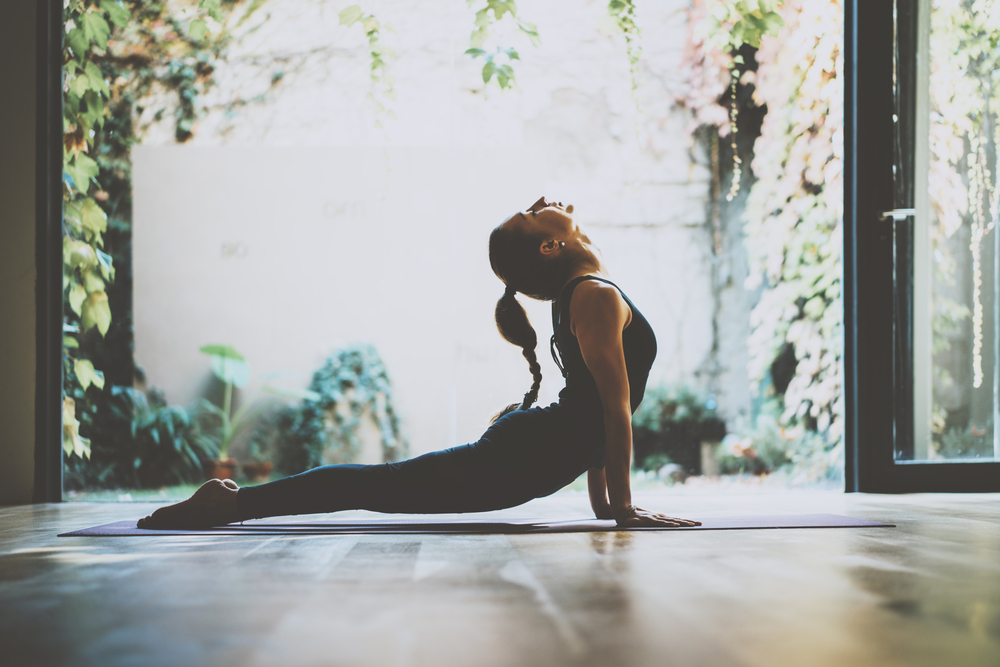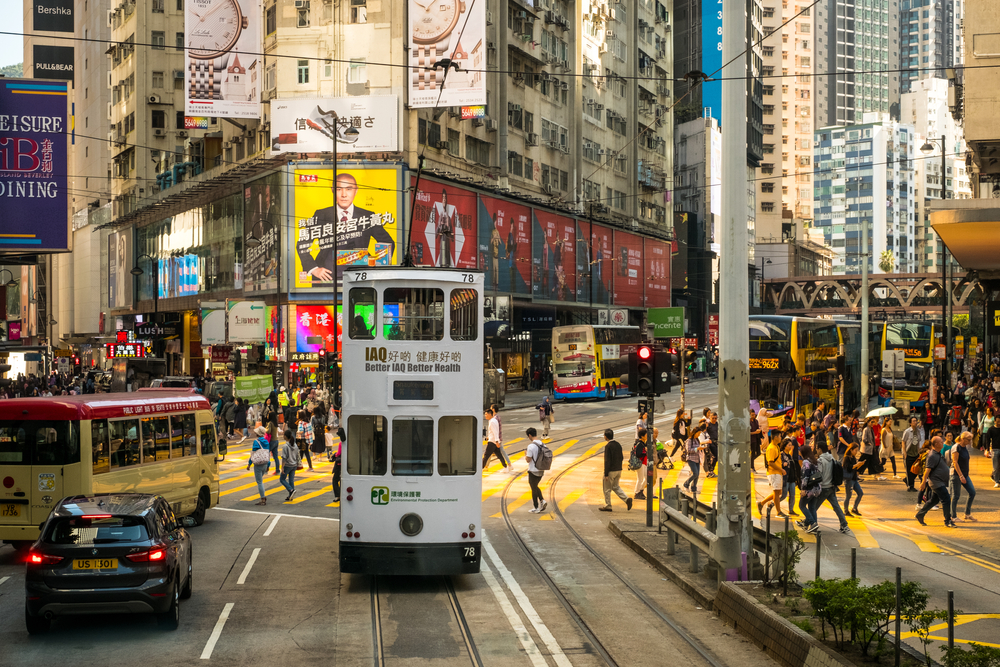Why Practise Yoga? The Benefits & Easy Yoga Poses for Beginners

Why Practise Yoga?
- The countless benefits of doing yoga are why an ever-increasing number of people are drawn to it. Perhaps you’re looking for ways to improve flexibility and balance, fix bad postures from sitting too long at your office desk, or get in shape and tone your body. Whether you’re relieving stress and chronic pain or simply finding an exercise to throw into your daily routine, yoga could be your answer. The different styles of yoga, together with the availability of variations or modifications for poses, make it a very inclusive sport that can be practised by people of all ages and physical abilities. The mental benefits are another major reason why people practise yoga. Its emphasis on mindfulness and body awareness, working together with different breathing, meditation and relaxation techniques, can help maintain and improve mental wellness.
4 Easy Yoga Poses for Beginners
Before you begin your yoga practice, do some gentle stretches, especially for the neck, wrists, hips, and ankles. This helps to warm up the joints and prevent injuries. If you can, practise on a yoga mat as they are specially designed to prevent hands and feet from slipping. Practitioners can keep their hold strong throughout the exercise, and it also offers a bit of cushioning.
Downward-Facing Dog

Downward-facing dog (Adho Mukha Svanasana), sometimes also known as downward dog or down dog, is perhaps one of the most well-known yoga poses. It is a full-body stretch that is often practised in Vinyasa and Ashtanga yoga as a transitional or a resting pose.
Benefits of Downward-Facing Dog:
- Stretches the lower body. Relieve chronic pains caused by sitting for long periods and tight hamstrings
- Opens and strengthens the upper body
- Elongates the spine
- Tones the arms and legs
Step-by-Step Guide:
- Begin on your hands and knees. Place your wrists directly under your shoulders and your knees directly under your hips.
- Press your palms firmly into the floor by spreading your fingers and distributing the weight evenly through your palms and knuckles.
- Tuck your toes against the yoga mat and lift your knees off the ground.
- Bring your pelvis up towards the ceiling and slowly begin to straighten your legs. As you lift your pelvis, your hands should be pushing away from the floor.
- Bring your body into the shape of an inverted “V”. Press down equally through your palms and heels. Align your ears with your arms. Keep your neck long and relax but don’t let it dangle.
- Draw your chest down towards your thighs and lengthen your tailbone towards the ceiling while sinking your heels into the floor.
- Hold the position for 2 to 3 breaths for the first time. You can gradually increase the duration as you practise more.
- To release, gently and slowly bend your knees to bring back to the mat and go back to the starting position.
Beginner’s Tips:
Although the downward-facing dog pose looks pretty straightforward, many beginners find it difficult to access the pose correctly because of injuries or the lack of flexibility. If you notice your heels are high off the ground, a rounded back or the body shape resembling an inverted “U” shape instead of an inverted “V”, it is most likely due to tight hip flexors, hamstrings or calf muscles. A variation is to bend your knees throughout the pose in order to keep your spine straight and avoid putting all the weight on your arms and palms.
Cobra

The cobra pose (Bhujangasana) is a back bending pose often practised as part of a Sun Salutation sequence. This pose helps strengthen the back and prepare yogis for deeper backbends.
Benefits of Cobra:
- Strengthens muscles supporting the spine and back of legs
- Increase mobility of the spine
- Opens up the chest
- Stretches the shoulders, upper back, lower back and abdomen
- Tones shoulders, abdomen and buttocks
- Relieves sciatica pain
Step-by-Step Guide:
- Lie on your stomach and stretch your legs back, hip wide and parallel, with the tops of your feet on the mat.
- Spread your hands on the mat directly under your shoulders. Bring your shoulders in. Your elbows should be pointing backwards.
- Look straight down to your mat with your neck in a neutral position.
- Press your palms, pelvis, top of thighs and feet firmly into the ground.
- Inhale and lift your chest up. Keep the back of your neck long. Roll your shoulders back as if you are trying to squeeze your shoulder blades together. Depending on your flexibility, you can either keep your arms straight or bent. Keep your pelvis firmly pressed to the floor.
- Hold the pose for 15 to 30 second while breathing steadily and easily.
- Release back to the floor with an exhale.
Beginner’s Tips:
Be mindful not to overdo the backbend as it could cause compression and back pain. Everyone’s body is different. To avoid straining your back muscles, keep your abs engaged throughout to protect your lower back while opening up your upper body more.
Upward-Facing Dog

Upward-facing dog (Urdhva Mukha Svanasana) is another back bending yoga pose. Although it requires a bit more strength than the cobra, it is still an easy-to-do yoga pose for beginners. It is a great exercise to open up the chest and shoulders and strengthen the arms.
Benefits of Upward-Facing Dog:
- Stretches the chest, shoulders and abdomen
- Strengthens the wrists, arms and spine
- Improves posture
- Tones the legs
Step-by-Step Guide:
- Lie on your stomach with your forehead on the floor. Your legs should be hip-wide and parallel to each other. The tops of your feet should be touching the floor.
- Put hands next to your lower ribs with your elbows drawn in. By now, your shoulders should be lifted off the floor.
- Straighten your arms to open your chest towards the ceiling. Press your toes firmly into the floor and lift your thighs up.
- Keep your legs engaged and drop your hips towards the floor. Your palms and the tops of your feet should be the only contact points with the floor.
- Keep your shoulders above your wrists. Pull your shoulders away from your ears by drawing your shoulder blades down and lengthening your neck.
- Hold for 6 to 10 breaths before releasing back to the floor.
Beginner’s Tips:
Many people confuse this pose with the cobra pose. The major difference is that the arms are straight in the upward-facing dog pose, and the pelvis is lifted off the ground. It is important to keep your shoulders, back and thighs engaged while practising this pose in order to get the correct alignment, prevent straining and make the most out of the pose.
Happy Baby

Happy baby (Ananda Balasana) is a relatively easy yoga pose even for beginners. It is often practised at the end of a yoga or pilates session for post-workout relaxation and gentle stretching.
Benefits of Happy Baby:
- Stretches the inner thighs, groin and hamstrings
- Opens up the hips, shoulders and chest
- Relieves lower back pain
- Relieves stress and fatigue
Step-by-Step Guide:
- Lie on your back with your head flat on the mat.
- Bring your knees towards your chest at a 90-degree angle. Flex your feet so that the soles of your feet are facing the ceiling.
- Grab the inside or outside of your feet. Open your knees slightly wider than your torso and shift them towards your armpits.
- Keep your feet flexed and directly above your knees. Release your hip sockets to allow your knees to sink closer to your chest.
- Breathe deeply and take your time in this pose. You may also rock gently from side to side.
Beginner’s Tips:
If you have trouble grabbing your feet with your hands without raising your shoulders, lifting your chin or arching your back, it is likely due to a lack of flexibility. You may grab your ankles or shins instead, or alternatively, loop a yoga strap over the middle of the arch of your feet and hold on to the strap during the exercise.
Yoga is all about listening to your body. Just remember that everyone’s body works a little differently. Stop if you feel pain at any point during the exercise or seek advice from a professional yoga instructor to find poses that suit your body.
At Lanson Place, the wellness of our guests is one of our top priorities. The facilities and community activities at our properties are designed to relax, recharge and reinvigorate our guests. At Lanson Place Waterfront Suites, in addition to a wellness pool and a 24/7 gym, guests can also join one of our yoga or meditation group classes led by qualified yoga instructors. For more information, please feel free to contact our team.


